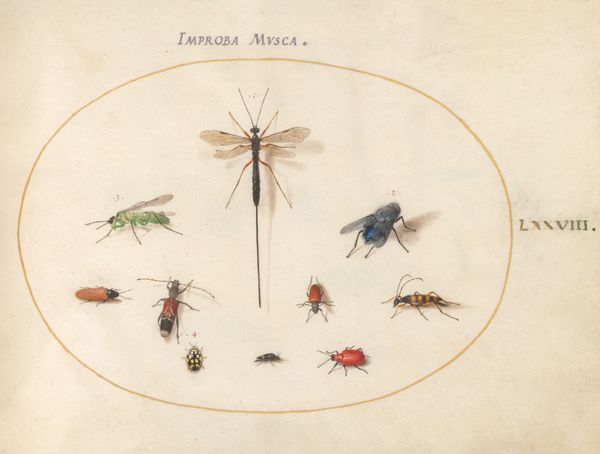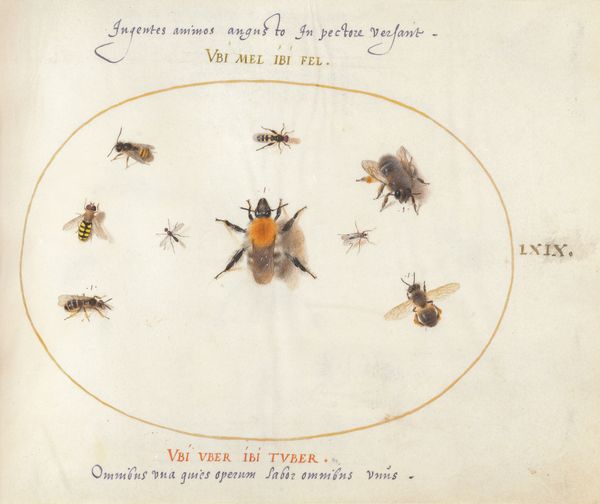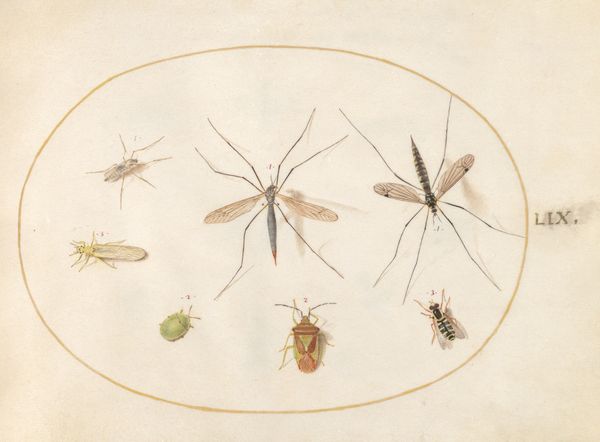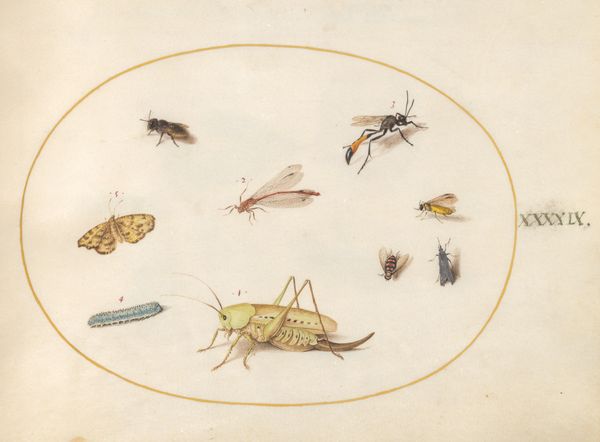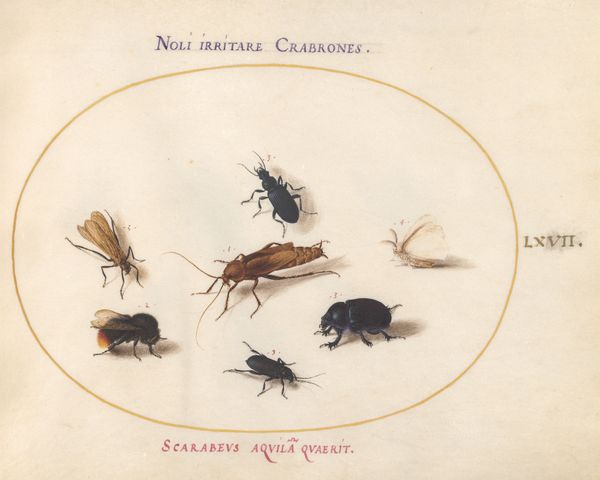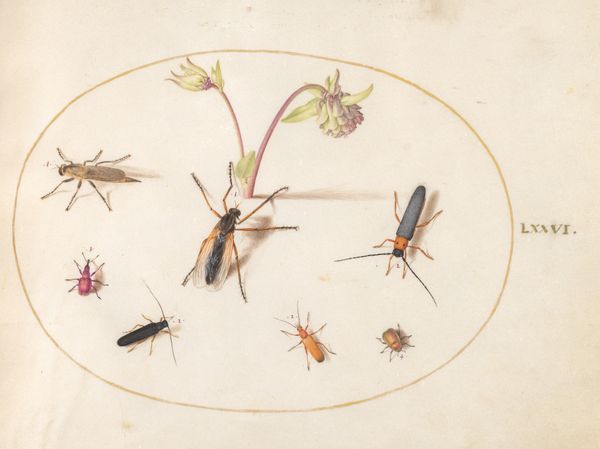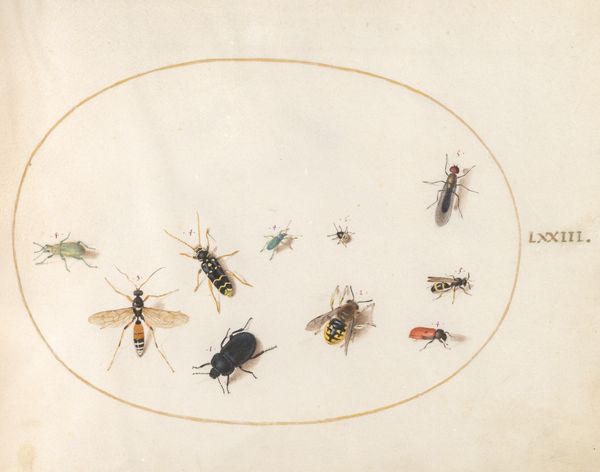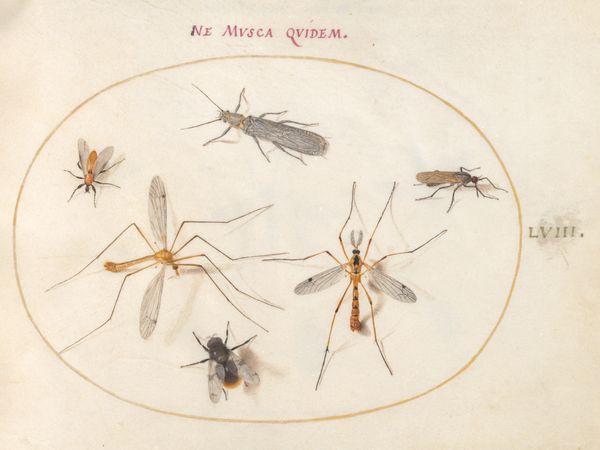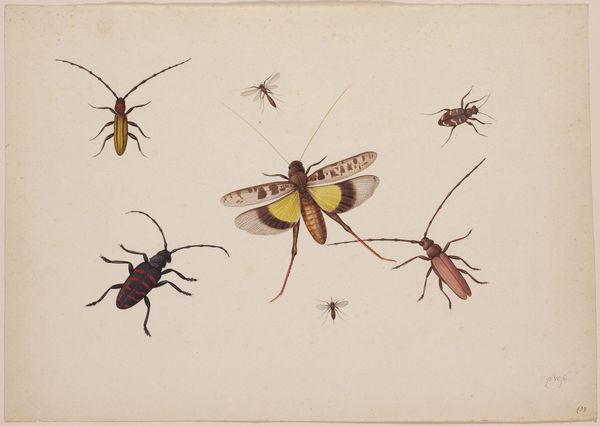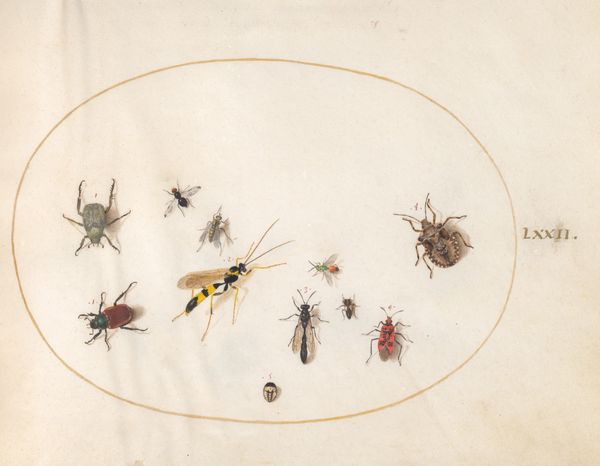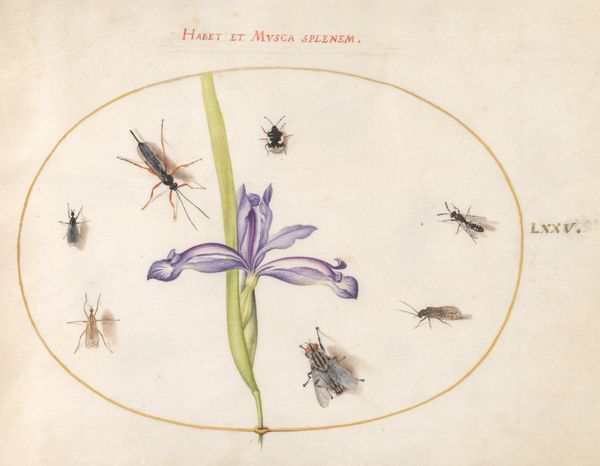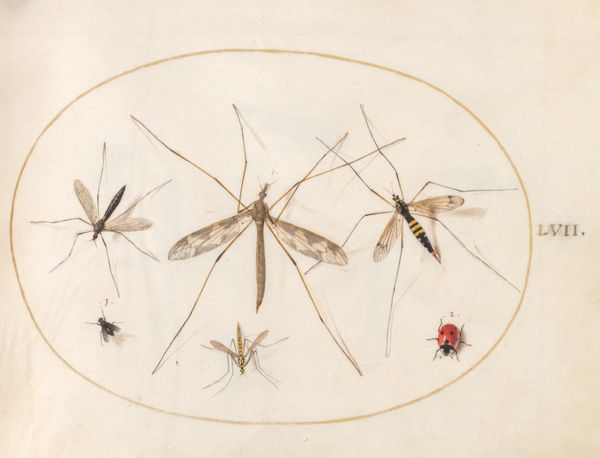
Plate 21: A Butterfly with a Dragonfly, a Ladybug, and Five other Insects c. 1575 - 1580
0:00
0:00
drawing, painting, watercolor
#
drawing
#
painting
#
mannerism
#
watercolor
#
watercolour illustration
#
botanical art
Dimensions: page size (approximate): 14.3 x 18.4 cm (5 5/8 x 7 1/4 in.)
Copyright: National Gallery of Art: CC0 1.0
Curator: Welcome. Today, we’re examining Plate 21: A Butterfly with a Dragonfly, a Ladybug, and Five other Insects, an intriguing piece by Joris Hoefnagel created around 1575 to 1580, rendered with watercolor. Editor: Immediately, I'm struck by its delicate, almost jewel-like quality. It's deceptively simple, this cluster of insects, yet something feels staged, almost allegorical, like characters on a stage. Curator: Indeed. Hoefnagel's work reflects the Mannerist style, an artistic response to the Renaissance’s emphasis on idealized naturalism. The meticulous detail given to each insect reflects an alchemist's sensibility. This isn’t just scientific illustration; it's about symbolism. Consider how butterflies have been long associated with metamorphosis, change, the soul, and resurrection. Editor: I appreciate the point about the style pushing back against idealized nature. But what does it really mean when the focus becomes obsessive detailing of insects in this strange little theater of his own? Is he critiquing scientific detachment? Curator: Possibly, or celebrating nature through careful examination of detail, transforming the mundane into something marvelous. The placement of the insects, circled within the confines of an oval frame, could symbolize the microcosm, the individual reflection of the wider universe, their tiny drama representing a larger spectacle. It echoes traditions of emblem books and humanist philosophy. Editor: The fact that there is text here too, what could be read as "Credula res amor..." This Latin adds an almost satirical layer – "Love is a credulous thing...". Given the social upheaval of the era, the reformation, rising mercantilism, is he commenting on something more pointed about faith, about power, about our willingness to be seduced? Curator: A definite possibility, and the Mannerist sensibility does lean towards ambiguity. His focus seems almost hyper-real. This adds to the sense of the scene being more than mere description, an encapsulation of the intricate web of life and a coded message. Editor: Ultimately, this artwork reveals that even when seemingly focusing on the minute details of insects, a deeper commentary can emerge if you put a little work and contemplation in to the picture and artist's context. Curator: Agreed. There's so much layered into this composition beyond just the aesthetics. We hope that close observation encourages you to look more closely at the history represented within this work and those still yet to be told.
Comments
No comments
Be the first to comment and join the conversation on the ultimate creative platform.
